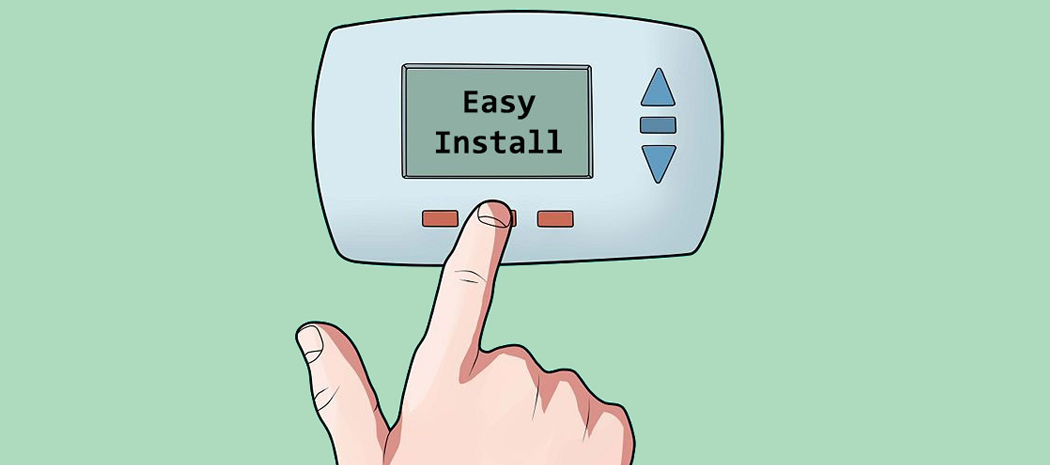
- TIME REQUIRED: Under 2 hours
- DIFFICULTY: Beginner
There are few home improvement projects that offer yearly savings like new thermostat installation. Replacing your old model with new programmable or Wi-Fi thermostats can make a big difference during the changing seasons. When used properly, and depending on the severity of the winters in your area, you could earn a savings of up to $180 on your yearly energy bills.
Economically, Programmable thermostats and smart thermostat installation makes the most sense for every home. However, the following steps can also be used for installing manual varieties:
This guide offers step by step instructions on how to replace a thermostat and how to install a thermostat, including the procedures for measuring and then making adjustments to ensure the table is properly aligned.
Tip: When shopping for your home thermostat replacement, check the package to ensure it is compatible with your home's system. Our Thermostats buying guide offers additional tips for understanding the different thermostat types and their features. Read to learn the difference between programmable and non-programmable thermostats.
|
1 |
Turn Off Power to the HVAC System |

- Before you begin to change the thermostat in your home, turn off the power for your heating and air-conditioning system at the main service panel.
- Remove the old thermostat cover plate with a screwdriver.
Tip: Screwdriver sets come with a variety of head types to fit various fixtures in your home.
|
2 |
Remove the Old Thermostat |

- Unscrew the thermostat mounting screws and remove the thermostat body.
- Label the low-voltage wires to identify their screw-terminal locations using masking tape and then disconnect the wires. There is no standard color code, so use letter codes to make the wires easy to identify.
- Remove the thermostat base by loosening the mounting screws.
- Tape the wires to the wall or wrap them around a pencil to prevent them from slipping into the wall cavity.
|
3 |
Install the New thermostat |

Safety note: Do not use on your thermostat on circuits exceeding manufacturer-specified voltage. Higher voltage thermostat wiring will damage the controls and may cause shock or become a fire hazard. Additionally, short or incorrect thermostat wiring will the damage unit and may cause personal injury and/or property damage.
- Separate the front of the new thermostat from the base. Begin by installing the base first.
- Thread the low-voltage wires through the specified opening of the new thermostat base.
- Use a small level to make sure it’s properly aligned.
- Mount the thermostat base on the wall using the screws included with the thermostat.
- Connect the low-voltage wires to the appropriate screw terminals on the new thermostat base
- If your connections do not match, consult the installation diagram in the new thermostat's owner's manual.
- Optional: Locate the low-voltage transformer that powers the thermostat. The transformer is usually located near the heating and air-conditioning system or inside of a furnace access panel.
- Tighten any loose wire connections and make sure the wires and sheathing are in good condition.
- Install the battery or batteries in the thermostat body (if applicable). Make sure the battery size and polarity are both correct.
- Mount the thermostat base by gently pushing the excess wire back into the wall opening and plugging the hole with a fire-resistant material. Fiberglass insulation is great for preventing drafts from affecting thermostat operation.
- Mount the control unit to the base using the screws included with your thermostat. Tighten the screws securely.
- Restore power to your heating/cooling system, then press the reset button to clear the program memory.
- Program the thermostat according to the manufacturer's instructions.
- Test the unit to make sure both the furnace and air conditioning unit are cycling properly.
|
4 |
Thermostat Wiring Tips |

- Installation varies for two-wire systems (heating only or cooling only).
- If you have a two-wire system, refer to the instructions manual provided by the manufacturer for a more detailed installation guide.
- Tighten any unused terminals securely.
- If your system has more than two wires, follow the manufacturer installation diagram to determine correct wire connections.
- Heating and cooling needs vary from season to season, so adjust the programming as needed to accommodate your lifestyle.
- If you have more than one heating or cooling system, placing an adjustable thermostat on each one will ensure greater energy efficiency.

